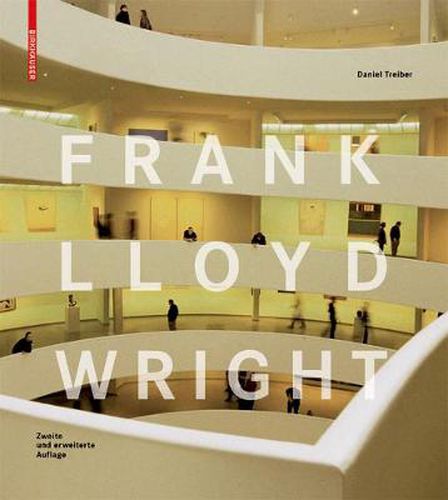Readings Newsletter
Become a Readings Member to make your shopping experience even easier.
Sign in or sign up for free!
You’re not far away from qualifying for FREE standard shipping within Australia
You’ve qualified for FREE standard shipping within Australia
The cart is loading…






Frank Lloyd Wright (1867-1959) exercised a shaping influence on architectural history throughout the world as only very few other architects beside him have done. His structures - developed from landscape, program, material, and construction - are highly individual and independent of the stylistic developments of modern architecture. His constant attempts to invent new things gave rise to the idiosyncratic forms and constructions that are typical of his work. The author, Daniel Treiber, has produced a well-researched and thorough presentation that highlights the fundamental aspects of the American architect’s work that are relevant from a contemporary perspective. He systematically investigates the forms, types, and strategies of Wright’s oeuvre and accompanies his outstanding texts with a lavish offering of photographs and plans. Thanks to his many years of experience teaching design and architectural history at the Ecole d'architecture in Lille, France, and elsewhere, the author possesses a deep and comprehensive expert knowledge of his subject.
$9.00 standard shipping within Australia
FREE standard shipping within Australia for orders over $100.00
Express & International shipping calculated at checkout
Frank Lloyd Wright (1867-1959) exercised a shaping influence on architectural history throughout the world as only very few other architects beside him have done. His structures - developed from landscape, program, material, and construction - are highly individual and independent of the stylistic developments of modern architecture. His constant attempts to invent new things gave rise to the idiosyncratic forms and constructions that are typical of his work. The author, Daniel Treiber, has produced a well-researched and thorough presentation that highlights the fundamental aspects of the American architect’s work that are relevant from a contemporary perspective. He systematically investigates the forms, types, and strategies of Wright’s oeuvre and accompanies his outstanding texts with a lavish offering of photographs and plans. Thanks to his many years of experience teaching design and architectural history at the Ecole d'architecture in Lille, France, and elsewhere, the author possesses a deep and comprehensive expert knowledge of his subject.